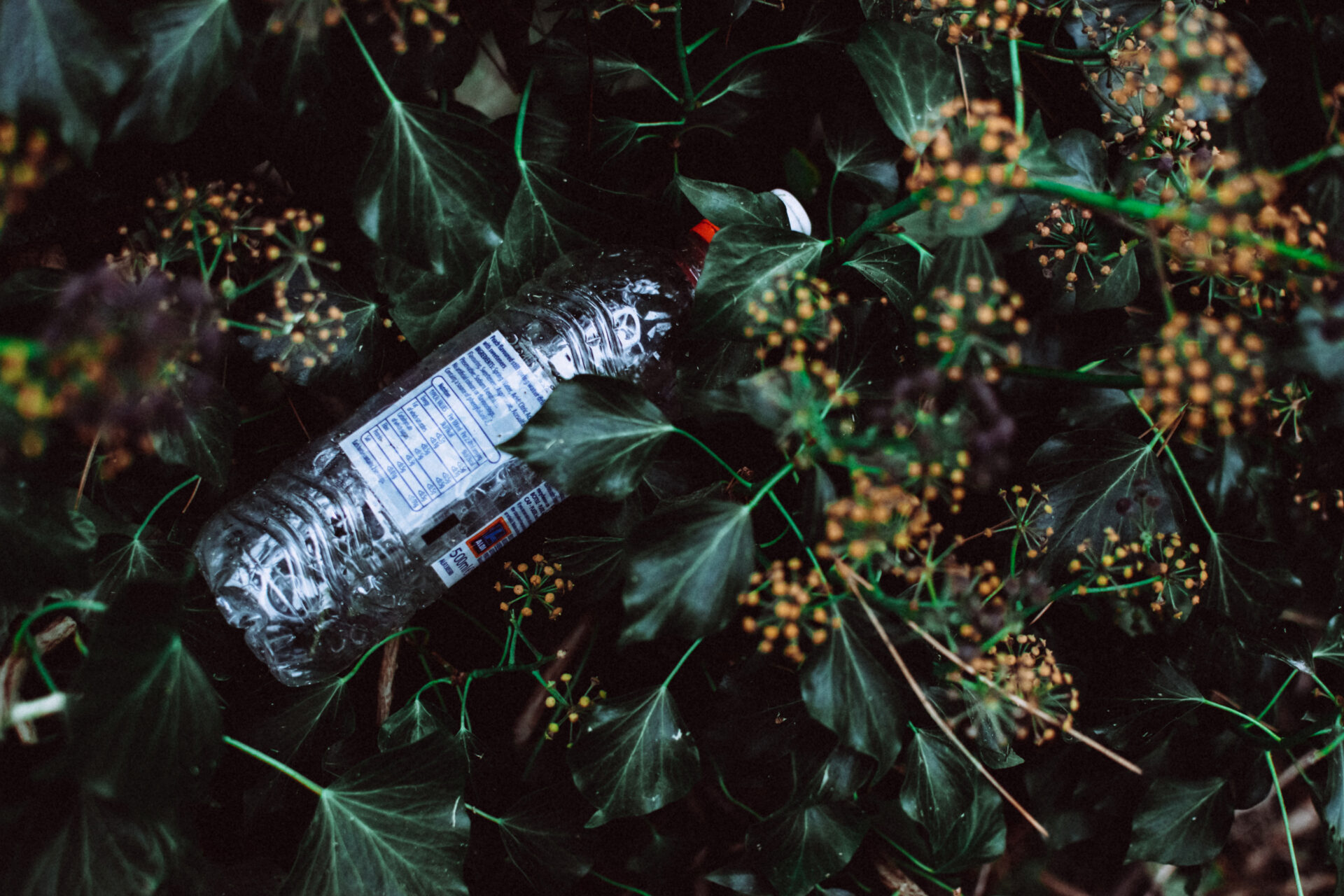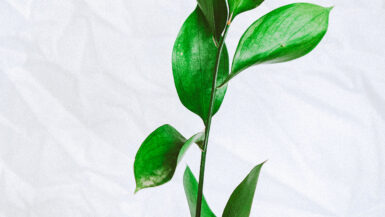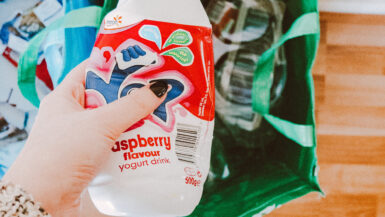Welcoming a newborn into your family is a momentous occasion, and as parents, it is natural to want the best for your little one. In recent times, environmental concerns have come to the forefront, with plastic pollution being a significant issue. As responsible parents, it is essential to make thoughtful choices that not only benefit our children but also contribute to the well-being of our planet. In this article, we will guide you through the process of creating a plastic-free nursery for your newborn. We will explore eco-friendly alternatives for essential items, discuss the importance of sustainable materials, and provide helpful tips on how to reduce plastic waste, ensuring that your baby’s first environment is not only safe and healthy but also kind to the Earth. So, let’s embark on this journey towards conscious parenting and embrace a plastic-free lifestyle for our future generations.
Eco-Friendly Nursery Furniture: Sustainable Choices for Your Baby’s Room
Creating a nurturing and safe environment for your newborn starts with selecting the right furniture for their nursery. By choosing eco-friendly and sustainable options, you can ensure that your baby’s room is free from harmful plastics and contributes positively to the environment. In this subsection, we will explore various sustainable furniture alternatives for your baby’s nursery and discuss the benefits of using these materials.
Opt for Sustainable Wood Furniture
Wooden furniture is a classic choice for any nursery, and by selecting items made from sustainably sourced wood, you can minimize your ecological footprint. Look for furniture with certifications such as FSC (Forest Stewardship Council) or PEFC (Programme for the Endorsement of Forest Certification), which ensure that the wood has been sourced responsibly and contributes to the conservation of forests. Solid wood furniture is not only eco-friendly but also durable and long-lasting, making it a wise investment for your baby’s room.
Choose Furniture Made from Recycled Materials
Another eco-friendly option is to select nursery furniture made from recycled materials. This can include reclaimed wood, recycled metal, or even repurposed plastic that has been transformed into safe and sturdy furniture pieces. By choosing items made from recycled materials, you are contributing to the reduction of waste in landfills and promoting a circular economy.
Invest in Multi-Functional and Convertible Furniture
One way to reduce your environmental impact is by investing in multi-functional or convertible furniture pieces for your baby’s nursery. For example, purchasing a crib that can be converted into a toddler bed or a changing table that can later be used as a dresser will minimize the need for additional furniture in the future. This not only saves you money but also reduces the overall consumption of resources.
Consider Second-Hand or Vintage Furniture
Buying second-hand or vintage furniture for your baby’s nursery can be an eco-friendly and cost-effective option. Not only does it give new life to pre-loved items, but it also prevents them from ending up in landfills. Ensure that the furniture is in good condition and meets safety standards before bringing it home.
Use Low-VOC and Non-Toxic Finishes
When considering your nursery furniture, it is essential to pay attention to the finishes used on the pieces. Opt for furniture with low-VOC (volatile organic compounds) and non-toxic finishes to minimize the release of harmful chemicals into your baby’s environment. These finishes are not only better for the planet but also contribute to a healthier indoor air quality for your newborn.
By selecting eco-friendly and sustainable furniture for your baby’s nursery, you are taking a significant step towards creating a safe and healthy environment for your little one while also reducing your family’s environmental impact. With these tips in mind, you can confidently make choices that benefit both your baby and the planet they will inherit.
Natural and Organic Baby Bedding: Sleeping Safely without Plastic
Ensuring a good night’s sleep is crucial for your newborn’s growth and development, and this starts with choosing the right bedding for their crib. Opting for natural and organic materials not only provides a comfortable and safe sleep environment but also eliminates the use of plastic and its potentially harmful effects. In this subsection, we will discuss various options for natural and organic baby bedding and share tips on selecting the best products for your little one’s nursery.
Organic Cotton: A Breathable and Hypoallergenic Choice
Organic cotton is a popular choice for baby bedding due to its softness, breathability, and hypoallergenic properties. Unlike conventional cotton, organic cotton is grown without the use of harmful pesticides and chemicals, which can cause allergies and skin irritations in babies. Look for bedding with GOTS (Global Organic Textile Standard) certification, which ensures the highest level of organic and ethical standards in the production process.
Bamboo: A Sustainable and Moisture-Wicking Option
Bamboo is another eco-friendly alternative for baby bedding, as it is a fast-growing and renewable resource. Known for its moisture-wicking properties, bamboo bedding can help regulate your baby’s temperature during sleep, ensuring they stay comfortable throughout the night. Additionally, bamboo is naturally antibacterial and hypoallergenic, making it an excellent choice for sensitive skin.
Wool: A Natural Temperature Regulator
Wool is a natural insulator, making it an ideal choice for baby bedding during colder months. It helps regulate body temperature by wicking away moisture, ensuring your baby stays cozy and warm. When selecting wool bedding, opt for products made with organic and ethically-sourced wool to ensure the highest quality and minimal environmental impact.
Consider Natural and Organic Filler Materials
For items like crib mattresses and pillows, it is essential to consider the filler materials used. Natural and organic options such as organic latex, coconut coir, and wool can provide excellent support and comfort for your baby while eliminating the need for plastic-based materials like polyurethane foam. Pay attention to the certifications and materials listed on the product labels to ensure you are making an informed choice.
Choose Bedding with Non-Toxic Dyes and Finishes
In addition to selecting natural and organic materials for your baby’s bedding, it is vital to consider the dyes and finishes used on the products. Opt for bedding with non-toxic, water-based dyes, and finishes to minimize the risk of exposure to harmful chemicals. This not only benefits your baby’s health but also contributes to a more sustainable production process.
By choosing natural and organic baby bedding for your newborn’s nursery, you are taking a step towards creating a safer sleep environment while also reducing your family’s reliance on plastic-based products. With these options and tips in mind, you can rest easy knowing that your baby is sleeping comfortably and safely in their plastic-free nursery.
Plastic-Free Toys and Playtime Essentials for Newborns
Playtime is a crucial aspect of a newborn’s development, and selecting the right toys and essentials for your little one can significantly impact their growth and well-being. As part of creating a plastic-free nursery, it is essential to consider eco-friendly and sustainable alternatives for your baby’s playtime needs. In this subsection, we will explore various plastic-free toys and essentials that are not only safe for your newborn but also gentle on the environment.
Wooden Toys: A Timeless and Durable Option
Wooden toys have been cherished by children for generations and continue to be a popular choice for their timeless appeal and durability. Opt for toys made from sustainably sourced wood with non-toxic finishes, ensuring that your little one’s playtime is both safe and eco-friendly. From wooden building blocks to puzzles and rattles, there are countless options available to stimulate your newborn’s senses and encourage their development.
Organic Stuffed Animals: A Cuddly and Chemical-Free Companion
Stuffed animals can be a beloved companion for your newborn, providing comfort and promoting emotional bonding. Choose organic stuffed animals made from natural materials like organic cotton or wool and filled with hypoallergenic stuffing for a safe and eco-friendly option. Ensure that the stuffed animal is free from harmful dyes and chemicals, prioritizing your baby’s health while reducing the use of plastics.
Non-Toxic Play Mats: A Comfortable and Safe Space for Exploration
A play mat is an essential item for your newborn’s playtime, offering a comfortable and safe space for them to explore their surroundings. Look for non-toxic play mats made from natural materials like organic cotton, wool, or cork, which provide cushioning and support without the use of harmful plastics. These materials are not only better for your baby’s health but also contribute to a more sustainable production process.
Eco-Friendly Teethers: A Natural Solution for Soothing Sore Gums
As your newborn begins teething, providing them with a safe and effective teether is crucial for their comfort. Consider eco-friendly alternatives like natural rubber or wooden teethers, which offer a gentle texture for sore gums without the risk of harmful plastic chemicals. By choosing a natural teether, you can ensure your baby’s safety while minimizing your environmental impact.
Books Made from Sustainable Materials: Encouraging Early Literacy and Environmental Awareness
Introducing your newborn to the world of reading is a fantastic way to foster their cognitive development and imagination. Opt for books made from sustainable materials, such as recycled paper or FSC-certified wood pulp, to promote early literacy while also teaching your child the importance of environmental responsibility. These eco-friendly books can be a valuable addition to your plastic-free nursery, sparking curiosity and a love for learning in your little one.
By selecting plastic-free toys and playtime essentials for your newborn’s nursery, you are not only promoting their healthy development but also teaching them the importance of sustainability from a young age. With these options and tips, you can create a nurturing and eco-friendly environment for your baby to grow and thrive, laying the foundation for a lifetime of conscious living.
Green Diapering Solutions: Cloth Diapers and Biodegradable Alternatives
One of the most significant challenges for parents aiming to create a plastic-free nursery is finding environmentally friendly diapering solutions. Traditional disposable diapers are a significant source of plastic waste, taking hundreds of years to decompose in landfills. Fortunately, there are green alternatives, such as cloth diapers and biodegradable disposables, that can help reduce your baby’s environmental impact while still providing the necessary comfort and protection. In this subsection, we will explore these sustainable alternatives and provide practical tips to help you make the right choice for your baby and the planet.
Cloth Diapers: A Reusable and Cost-Effective Option
Cloth diapers have been making a comeback in recent years, as more parents recognize their environmental and financial benefits. Made from natural and absorbent fabrics, such as cotton, bamboo, or hemp, these reusable diapers can be washed and used multiple times, significantly reducing waste. Modern cloth diapers come in various styles, including all-in-ones, pocket diapers, and prefolds, catering to individual preferences and needs. By investing in a set of high-quality cloth diapers, you can save money in the long run and minimize your baby’s contribution to plastic pollution.
Biodegradable Disposable Diapers: A Greener Alternative for Busy Parents
If the idea of washing cloth diapers seems daunting, biodegradable disposable diapers can be a more convenient and eco-friendly alternative. These diapers are made from plant-based materials, such as bamboo or wood pulp, and designed to break down more quickly than conventional disposable diapers. While they may still take some time to decompose, their overall environmental impact is significantly lower. When choosing biodegradable diapers, look for certifications like TÜV Austria or BPI, which indicate that the product meets compostability standards.
Hybrid Diaper Systems: Combining the Best of Both Worlds
For parents who want the convenience of disposable diapers but the sustainability of cloth, hybrid diaper systems may be the perfect solution. These systems typically consist of a reusable outer shell with a disposable, biodegradable insert. This allows for easy clean-up and reduced waste while still providing the benefits of a reusable diaper. Hybrid systems can be a great way to transition to a greener diapering solution without fully committing to cloth diapers.
Eco-Friendly Diaper Accessories: Enhancing Your Green Diapering Routine
To further reduce plastic waste in your baby’s nursery, consider using eco-friendly diaper accessories, such as reusable wipes, wet bags, and diaper pail liners. Reusable wipes made from natural materials like cotton or bamboo can be washed and used multiple times, minimizing waste and saving money. Wet bags and diaper pail liners made from sustainable materials can help contain dirty diapers and prevent leaks while also being kinder to the environment.
Proper Disposal and Washing Techniques: Maximizing the Benefits of Green Diapering
To fully reap the benefits of your green diapering choices, it is essential to follow proper disposal and washing techniques. For biodegradable disposable diapers, ensure they are disposed of correctly, as composting facilities or specific disposal methods may be required. For cloth diapers, follow washing instructions carefully, using eco-friendly detergents and energy-efficient washing methods to minimize water and energy consumption.
By exploring and implementing green diapering solutions in your newborn’s nursery, you are taking a significant step towards reducing plastic waste and creating a more sustainable future for your child. Whether you choose cloth diapers, biodegradable disposables, or a hybrid system, the key is to find a solution that works best for your family and the environment. With these options and tips in mind, you can confidently embrace a plastic-free diapering routine and contribute to a healthier planet for your baby to grow up in.
Planet-Friendly Nursery Décor: Creating a Cozy Space without Harmful Plastics
Decorating your baby’s nursery is an exciting process, as it allows you to express your creativity while creating a warm and inviting space for your newborn. To ensure your nursery is not only visually appealing but also eco-friendly, it is essential to consider planet-friendly décor elements that avoid harmful plastics and contribute to a healthier environment for your child. In this subsection, we will discuss various plastic-free nursery décor ideas and share tips on how to achieve a cozy and sustainable space for your little one.
Eco-Friendly Wall Art: Inspiring Imagination with Sustainable Materials
Adorning your nursery walls with eco-friendly art can add a touch of personality and charm to the space while remaining environmentally conscious. Look for wall art made from sustainable materials, such as reclaimed wood, recycled metal, or even plant-based inks on recycled paper. By choosing artwork that aligns with your plastic-free values, you can create a visually stunning nursery that also teaches your child the importance of sustainability.
Organic Textiles: Soft and Safe Touches for Your Baby’s Space
Incorporating organic textiles, such as curtains, rugs, and blankets, can add warmth and comfort to your baby’s nursery while avoiding harmful plastics. Opt for materials like organic cotton, wool, or bamboo, which are not only gentle on your baby’s skin but also biodegradable and eco-friendly. These natural textiles can enhance the overall ambiance of your nursery, providing a cozy and safe environment for your newborn.
DIY Upcycled Decor: Creating Unique and Personalized Pieces
If you enjoy getting crafty, consider creating your own upcycled nursery décor by repurposing items you already have at home or finding treasures at thrift stores. This not only adds a personal touch to your baby’s space but also reduces waste and promotes a circular economy. From transforming old picture frames into wall art to converting a vintage ladder into a bookshelf, the possibilities are endless when it comes to DIY upcycled décor.
Environmentally Friendly Lighting: Energy-Saving Solutions for Your Nursery
Choosing energy-efficient lighting options for your baby’s nursery can contribute to a more sustainable space while also reducing your energy bills. Opt for LED bulbs, which use less energy and last longer than traditional incandescent bulbs, and consider installing dimmer switches to control the intensity of your lighting. By creating a well-lit and energy-efficient nursery, you are fostering a healthy and eco-friendly environment for your baby.
Greenery and Air-Purifying Plants: Bringing Nature into Your Baby’s Space
Incorporating greenery into your nursery not only adds a touch of natural beauty but can also improve air quality and create a healthier environment for your newborn. Choose air-purifying plants, such as spider plants or snake plants, which are known for their ability to remove toxins from the air. Ensure that any plants you select are non-toxic and safe for babies, as curious little ones may be tempted to explore their surroundings.
By integrating planet-friendly décor elements into your baby’s nursery, you can create a comfortable and visually appealing space that also aligns with your plastic-free values. With these ideas and tips in mind, you can transform your nursery into a cozy and sustainable haven for your newborn, paving the way for a lifetime of conscious living and environmental stewardship.





Leave a reply